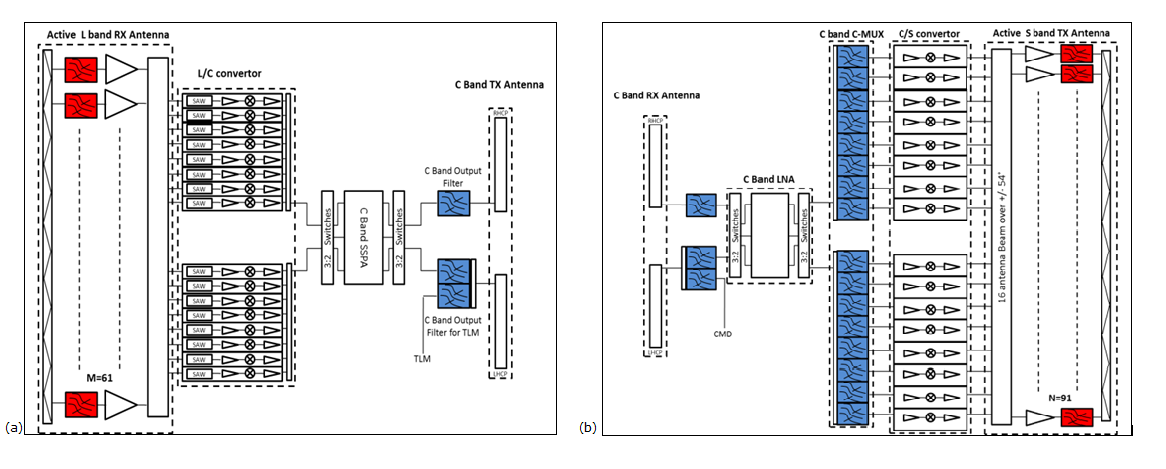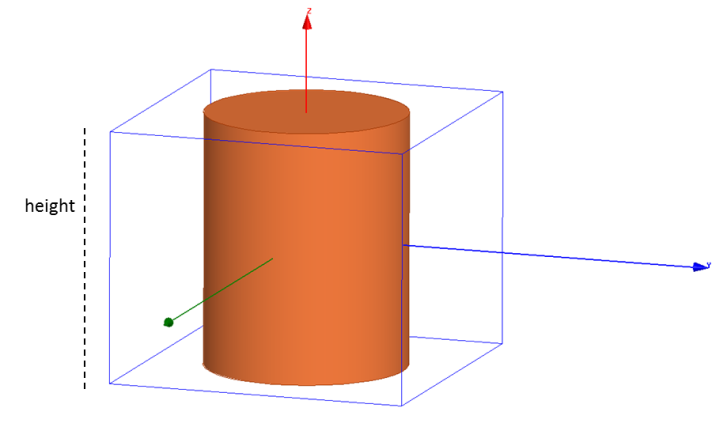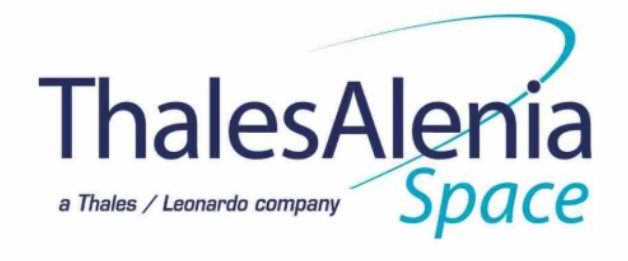-
StatusCompleted
-
Status date2018-03-05
-
Activity Code5C.296
The design of innovative miniaturized narrow-band bandpass filters based on TM010 mode dielectric resonators for satellite applications are the scope of the project. The final product consists of miniaturized and low-mass RF input/output filters in L/S bands for satellite mobile communications. Such filters are based on TM010 mode dielectric resonators.
Two main “killer” applications have been identified for TM mode DR in satellite applications:
- MSS (Mobile Satellite Services).
- TTC&M (Telemetry Tracking Command and Monitoring).
The activity is proposed by RFM, prime contractor and electro-magnetic designer, in collaboration with Thales Alenia Space-Italy as end-user, thermo-mechanical co-designer, test-responsible and potential final customer. TAS-I, as a system integrator, is indeed strongly interested in new technologies for MSS to introduce into their system to meet the more and more demanding requirements of satellite communication equipments. The Globalstar 2 has been considered as a reference application for the OMNIFIT design.
The devices proposed in this Artes 5.2 project is based on a particular type of dielectric resonators, called TM010 mode dielectric resonator, and it introduces benefits in term of size and mass reduction with respect to standard technology currently used in space application (i.e. combline and waveguide filters). It is important to remark that the mass and size are crucial for equipment on board satellites.
The MSS market is here considered as a first application in L- and S-band, since it is the most economically attractive and technically suitable for TM mode DR filter technology.
The L- and S-band allow the minimum ionosphere attenuation and the realization of the wide beam receiving antennas required by the system. For these reasons, this band is expected to be largely used in not only present but also future telecommunication systems.
Thales Alenia Space has been identified as possible end user. Also other users in Europe and all over the World can be identified.
The introduction on the space market of the miniaturized L/S passband filters can have potentially a strong impact on all satellites, since this kind of filters is part of most transponder units. Market trend analysis showed that the next generation of interactive/broadcasting mobile services via satellite will do a large use of the L and S-band and this segment of market could represent one of the most fruitful since the technologies are still under development and there could be the possibility to influence the future standards.

The devices proposed in this project are based on TM010 mode resonators loaded with ceramics with high relative permittivity. It is constituted by a metallic case loaded with a cylinder made of high-permittivity and low-loss dielectric material. The fundamental resonant mode is a TM mode, and its resonant frequency is independent from the cylinder height, while the height mainly influences and determines the unloaded Q of the resonator: the higher the cylinder, the higher the Q. the TM mode DR, allow for a significant reduction of physical dimensions with acceptable IL performance in many application cases. Therefore, TM mode dielectric resonators, compared to other dielectric resonator types, are the best trade-off between dimensions and loss (i.e. unloaded Q). In practice, the size of conventional filters can be reduced to 50% of the original ones and even further in many cases, while the resonator Qs that are of the order of 3000-5000, allow for acceptable insertion loss and insertion loss flatness in many applications of narrow-band input and output filters for satellites.

The project work is divided into 2 phases and 14 WPs. First part of the activity (phase 1) is focused on a deep and accurate review and analysis of the specification reported in this proposal, as well in the identification of possible back-up specifications. BBs are fabricated and thermal test of BBs and high power analysis for output filter follows the preliminary design activity. The PDR meeting (Preliminary Design Review) divides the project into two phases. Based on the results at end of phase 1, the detailed design and fabrication of the EM filters are carried out in phase 2. The environmental tests are carried out. After the test campaign, an accurate analysis of the results is done and before the project conclusion, actions for future activities, e.g. further improvements, qualification for space and commercialization, are considered.
Completed.
Two different filters for MSS applications based on TM010 mode cavities loaded with high-permittivity dielectrics has been designed, manufactured and tested during the Artes 5.2 project called OMNIFIT. The filters have been designed in order to minimize the dimensions and mass, for the next generation of satellites. A proprietary technique to ensure thermal stability of the filter response in the whole thermal range of operation has been developed and validated by experimental results. The S-band output filter has been optimized to handle 20W of input power in a space environment with a significant margin of safety. The high-power design has been validated by multipactor and CW high-power measurements. The most remarkable result of the project at the current state is the significant reduction of volume (>50%) which can be obtained when compared to the standard filters used for MSS applications (i.e. filters based on coaxial cavity resonators). Also the reduction of mass is very significant in the case of the S-band output filter (>50%). The devices from OMNIFIT project can be considered as ready for future qualification phase and a preliminary qualification is being defined.




